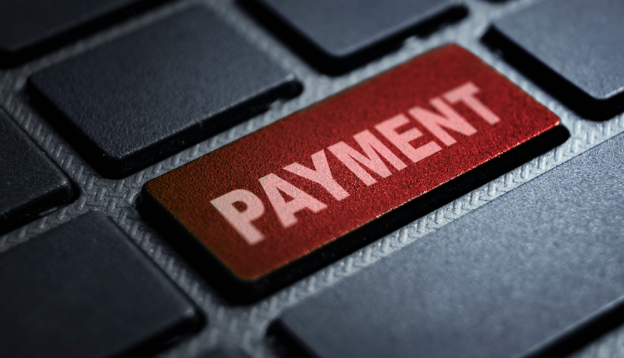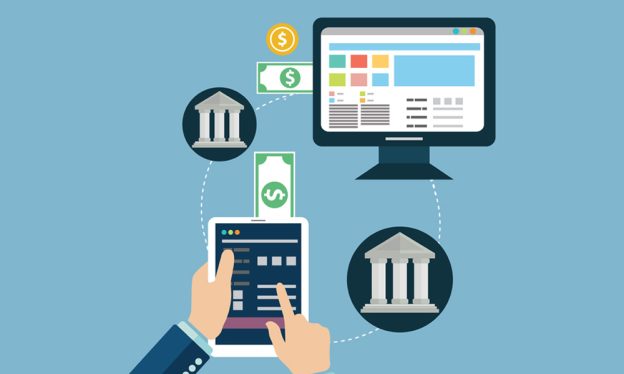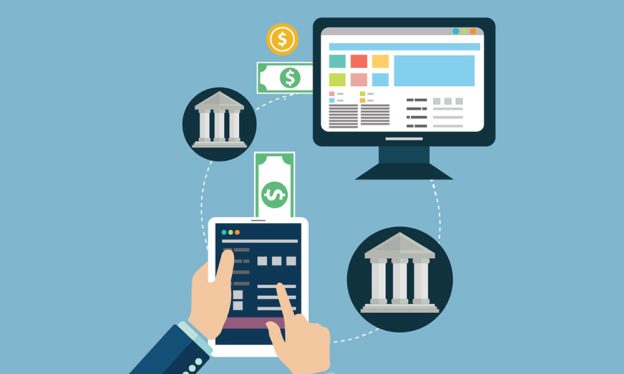ACH or Automated Clearing House transfers are bank-to-bank transactions that incur little to no fees, making them the most reliable choice for individuals and businesses. You may have already transferred funds through this method at some point. Direct deposits, depositing money into your retirement account, or paying your bills electronically are some examples of ACH Transfers. You might wonder how they are different from bank transfers.
Well, transactions processed through the ACH network are comparatively cheaper or free than the transfers conducted through the bank. This makes ACH transfers the most suitable, efficient, and cost-effective choice among merchants who process online transactions on a regular basis. To make the best of these transfers, it’s important that you are aware of the limitations and penalties involved in ACH transactions. Let’s understand ACH transfer limits in detail.
What are ACH Transfers?
The days when people had to write the checks and wait for weeks for them to get cleared are long gone. You no longer need to write checks or pay the bills in person. With the payment infrastructure evolving at an exponential rate, we get to see new payment methods that offer ultimate convenience and charge little to zero fees. While debit/card transactions allow you to make payments quickly, there are better and more efficient options, like ACH transfers.
Imagine being able to make payments for your good, bills, and other services from the comfort of your home. That’s what Automated Clearing House offers. You can process Direct Deposits and Direct Payments through ACH from home conveniently. Let’s understand each type of transaction the network processes.
- Direct Deposit: The payment transferred from the government entity or a business to the customer fall into the direct deposit category. The employee paycheck, tax refund, or interest payment are all examples of direct deposit.
- Direct Payment: Transactions that involve sending payments to individuals, businesses, or other entities are categorized into Direct Payments. For instance, paying the utility bill online through your bank account is classified as Direct Payment.
ACH transfers have many benefits. Payments processed through the automated clearing house tend to be safer than other transaction methods. Besides, the transfers are usually quick. They reflect on the bank account the next day after it’s initiated. As mentioned earlier, the transfer is usually free. Your bank won’t charge you anything for moving your money from one bank account to another. Even if they do impose a fee, it will be nominal. At least, you won’t pay the $25-$75 for wire transfers processed internationally. Even worse, these transactions take several days to show up in the user’s bank account. So, you can have peace of mind knowing that ACH transfers are safe, quick, and reliable.
How Do These Transfers Work?

Your day-to-day transactions that are processed electronically pass through the ACH network only. PayPal is the best example. The money you pay to the retailer or a friend through PayPal is cleared through the automated clearing house only.
In these transactions, the companies or recipient can pull money from your bank account once you have granted them permission. For instance, subscribing to a video streaming service and setting up autopay for the same will give the company permission to take money from your account. The transfer takes place through ACH network.
Worried about how long does the transaction take? In most cases, the transaction is cleared within the same day. You just need to take care of the time to initiate the transaction and it will be settled fairly quickly. It might take time on holidays or when the bank suspects a fraudulent transaction.
ACH has not set a specific number of transaction that can be processed in a day. But, there is a monthly or daily limit for the amount you can sent or receive through this payment method. Fortunately, many restrictions have been removed in order to provide people with greater payment flexibility. Keep reading to learn more about the types of restrictions imposed by the federal government and NACHA. Other than these, the financial institutions involved in the payment processing may also impose certain limitations. This can vary from one bank to another.
ACH Transfer Limits: What Are They?
Some financial institutions impose transaction limits on payments processed through the ACH network. These are mostly per-day and per-month limitations. These limits might vary depending on the financial institution involves in the transfer, but some limitations imposed by the Federal Reserve are applicable to each transaction—incoming and outgoing. Here are the common types of ACH transfer limits discussed.
Incoming Transactions
NACHA, the institute that controls all ACH transfers, has imposed an incoming transaction limit for all ACH transactions. They have increased the transaction limit to $1 million for the same-day transaction and the rule is effective since March 18, 2022. This change in the maximum incoming transaction limit was made to ensure that the receiver gets the payment from larger transactions within the same day.
For instance, tax-based payments or payroll funding can be easily processed through the automated clearing house. Still, if you are expecting a sizable payment from another party, it’s advisable to check the transaction limit and schedule the payment accordingly.
Outgoing Transactions
The above-mentioned change in the ACH transfer limit also applies to outgoing transactions. The limit has been changed from $100,000 per transaction to $1 million, enabling people to make huge payments effortlessly.
NACHA’s president mentioned that this change in the transfer limit was imposed to allow people to seamlessly transfer money without facing any interruption due to the amount restriction. There’s no need to break down the payment into two or three parts.
Employers can transfer money through direct deposits and government entities can pay a tax refund of up to $1 million through the ACH network.
Savings Account
People were allowed to process only six transactions per month through the Automated Clearing House network earlier. The restriction was lifted in April 2020 and now any number of transactions could be processed, depending on your bank. Earlier, if you exceeded the six-transaction-per-month limit, you’d be liable to pay the penalty. The Federal Reserve removed this restriction, providing users with greater control over their money.
Common Penalties for ACH Transfers

Fortunately, the Federal Reserve and NACHA have made many changes in the limitations, making ACH transfers available for wider use. However, it’s important to be aware of certain penalties associated with these transactions.
Cutoff Times
The ACH transfers processed on the same day must be submitted by 4:45 PM Eastern Time. Even a small delay in the submission can result in a late payment. If you are processing the transaction on a Friday and you initiate it at 5:03, it will not be processed until the coming Monday.
Simply put, if you want the same-day transaction, it’s advisable to process it earlier in the day (preferably in the morning or at noon). This ensures that your payment is sent/received within the same day.
Insufficient Funds
Before you initiate the ACH transaction, check your account balance. If your account doesn’t have sufficient balance to cover the transfer, you will be charged a penalty fee. The penalty might vary depending on the bank you have an account with.
Note that some ACH transfers may not work internationally. Sending money from one bank account to another in an international country might not be possible through ACH transfers. You may need to consider a wire transfer for such payments.
Transaction Limitations at US Banks
As mentioned earlier, banks can put limitations regarding the number of transactions or the total amount you can process every day or a month through ACH network. The good news is that most businesses are willing to adjust these limits based on your banking history. Still, it’s advisable to learn the basic limitations of ACH transfers so that you don’t end up getting penalized for sending/receiving more money than what your bank allows. Below we’ve listed the ACH transfer limits for different banks in the US.
| Bank Name | ACH Transfer Limit |
| Bank of America | $6,000 a month |
| TD Bank | $3,000 a month |
| Chase | $25,000/day, maximum transaction limit $10,000 per transaction |
| CitiBank | $10,000 a day |
| Capital One | $25,000 a month |
| U.S. Bank | Depends on your banking history, but the standard amount is $2,500 a day |
| Wells Fargo | $5000 a day |
| Ally Bank | The limit varies for each user |
The best part about ACH transfers is that they are free in most cases, but some bank charge a fee, which may vary depending on the size of the transaction. It can be anywhere between $0 and $3 for US bank and $3 (standard) and $10 (next-day) delivery for the Bank of America.
Bottom Line
ACH transfer has become an integral part of online business. Transferring funds between bank accounts at zero fee is something that every individual or business would prefer. What makes it even better is the same-day delivery. However, knowing the limitations when transferring a huge sum of money to someone is crucial. You don’t want to incur penalty for exceeding the transaction limit.


